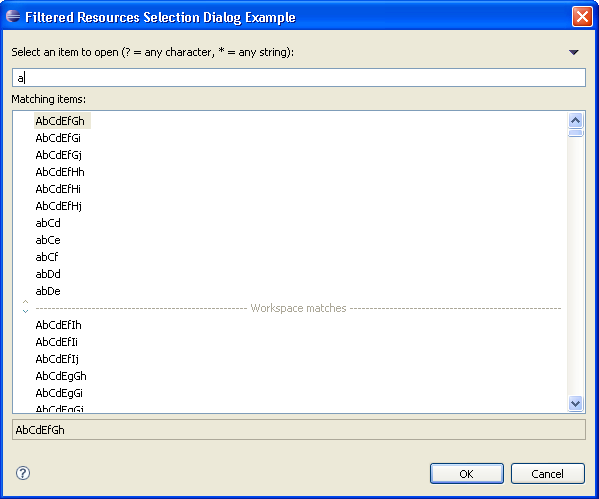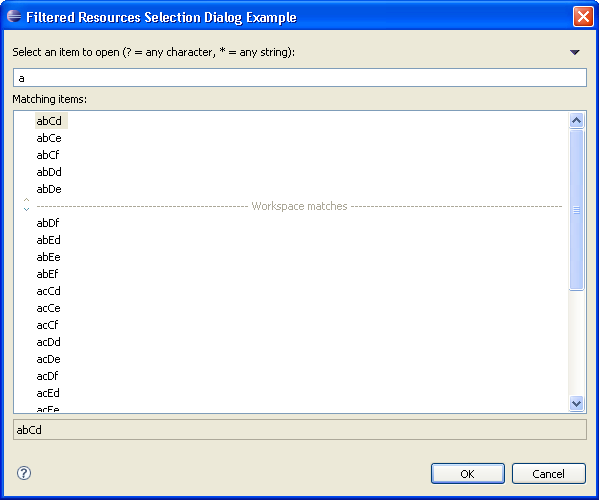In the previous part we created a subclass of FilteredItemsSelectionDialog.SelectionHistory but it do nothing.
Now, we should fill out methods responsible for saving and loading objects:
private class ResourceSelectionHistory extends SelectionHistory {
/*
* @see org.eclipse.ui.dialogs.FilteredItemsSelectionDialog.SelectionHistory#restoreItemFromMemento(org.eclipse.ui.IMemento)
*/
protected Object restoreItemFromMemento(IMemento element) {
return element.getString("resource"); //$NON-NLS-1$
}
/*
* @see org.eclipse.ui.dialogs.FilteredItemsSelectionDialog.SelectionHistory#storeItemToMemento(java.lang.Object,
* org.eclipse.ui.IMemento)
*/
protected void storeItemToMemento(Object item, IMemento element) {
element.putString("resource", item.toString()); //$NON-NLS-1$
}
}


